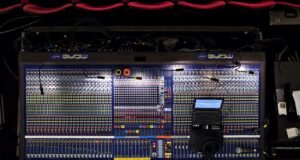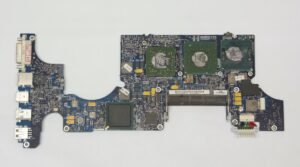What AI Tools Can Turnitin Detect?
As technology continues to advance, so too does the ability of AI tools to detect plagiarism. Turnitin, a widely used plagiarism detection software, scans student submissions for various forms of copied content and improper citations. To ensure academic integrity, it is important for students and educators to understand what types of AI tools Turnitin can detect.
Key Takeaways
- Turnitin can detect a wide range of plagiarism, including direct copying, paraphrasing, and improper citations.
- Other forms of content matching, such as content recycling and multiple submissions, can also be identified.
- Turnitin compares submitted papers against a massive database, including both current and archived web content.
Types of Plagiarism Detected
Turnitin utilizes advanced AI algorithms to identify different forms of plagiarism. It can detect:
- Direct copying: When a student copies content verbatim from a source without proper citation, Turnitin can flag it as potential plagiarism.
- Paraphrasing: Turnitin can detect when a student rephrases someone else’s work without providing adequate credit.
- Improper citations: If a student attempts to pass off someone else’s work as their own by incorrectly citing it, Turnitin can catch this form of plagiarism as well.
*Turnitin’s AI tools can identify these forms of plagiarism, providing students and educators with a comprehensive analysis of the originality of a submitted paper.
Content Matching and Other Forms of Plagiarism Detection
In addition to the types mentioned above, Turnitin can also identify content matching and other forms of plagiarism. Some of the additional detection capabilities include:
- Content recycling: Turnitin can detect if a student submits the same content for multiple assignments across different courses.
- Multiple submissions: If a student submits the same paper to Turnitin more than once, the software can recognize it and indicate potential self-plagiarism.
*These capabilities enable Turnitin to identify patterns and similarities in student submissions, promoting originality and academic honesty.
Comparison Against a Massive Database
Turnitin’s effectiveness lies in its extensive database, which is constantly being updated to include both current and archive web content. It compares submitted papers against millions of web pages, academic journals, books, and previously submitted student work stored in its database.
| Data Source | Data Points |
|---|---|
| Web Pages | Over billions |
| Academic Journals | Tens of thousands |
| Books | Millions |
| Student Work | Over 70 million |
*This vast database and continuous updates ensure that Turnitin can identify similarities in content from various sources, raising a red flag when potential plagiarism is detected.
Conclusion
Turnitin’s AI tools have become adept at detecting various forms of plagiarism, including direct copying, paraphrasing, improper citations, content recycling, and multiple submissions. With its extensive database and advanced algorithms, Turnitin helps promote academic integrity by identifying potential instances of plagiarism in student work.

Common Misconceptions
1. AI Tools Can Detect All Forms of Plagiarism
One common misconception people have about AI tools, such as Turnitin, is that they can effectively detect all forms of plagiarism. However, it is important to note that these tools have their limitations.
- AI tools primarily detect verbatim copying and direct quotations, while paraphrasing and rephrasing may not always be flagged
- Some AI tools may struggle to identify plagiarism in cases where the original content has been sufficiently altered or restructured
- Not all AI tools can accurately distinguish between intentional plagiarism and coincidental similarities in writing styles or common phrases
2. AI Tools Can Instantly Detect All Sources of Plagiarism
Another misconception is that AI tools can instantly detect all sources of plagiarism. While these tools are efficient, there are certain limitations to their functionality that can hinder their ability to identify every instance of plagiarism.
- Some AI tools may have a limited collection of sources in their database, which can result in a failure to identify certain unoriginal content
- The detection process can be time-consuming, especially when it comes to comparing large amounts of text with numerous sources
- Certain forms of plagiarism, such as using unpublished work or content from offline sources, may be harder for AI tools to detect
3. AI Tools Can Exclusively Identify Intentional Plagiarism
A common misconception is that AI tools can exclusively identify intentional plagiarism. While they can certainly flag unoriginal content, they cannot always determine the intention behind it.
- Sometimes AI tools may flag coincidental similarities or common phrases as potential plagiarism, when in reality, there was no intent to copy
- AI tools cannot discern if the writer accidentally included someone else’s ideas without proper citation
- In some cases, AI tools may lack the context needed to accurately determine the intention behind the use of certain sources

Table: AI Tools Used by Turnitin
Turnitin, a popular plagiarism detection tool, utilizes various AI technologies to efficiently analyze and compare submitted documents with a vast database of sources. The following table highlights some of the AI tools employed by Turnitin.
| AI Tool | Description |
|——————-|———————————————————————————|
| Natural Language Processing | Analyzes the structure and meaning of text to detect plagiarism more accurately. |
| Machine Learning | Helps Turnitin improve detection accuracy by continually training its algorithms.|
| Similarity Index | Calculates the percentage of text similarity between a submitted document and existing sources. |
| Clustering Algorithms | Groups similar documents together for easier analysis and identification of common patterns. |
| Authorship Analysis | Compares writing styles and patterns to determine whether a student’s work is consistent or suspicious. |
| Source Comparison | Matches phrases, sentences, and paragraphs to identify potential instances of plagiarism. |
| Database Integration | Seamlessly integrates with a comprehensive database of academic papers and other sources. |
| Citation Analysis | Assesses the accuracy and completeness of citations and references provided in a document. |
| Text Extraction | Extracts and analyzes text from various file formats, including PDFs and Word documents. |
| Document Metadata | Considers document metadata, such as creation date and author information, to detect inconsistencies or anomalies. |
Table: Types of Plagiarism Detected by Turnitin
Turnitin employs sophisticated algorithms and AI technologies to identify various types of plagiarism. The table below outlines the different types of plagiarism detected by Turnitin.
| Type of Plagiarism | Description |
|—————————-|————————————————————————————-|
| Copy and Paste | Directly copying and pasting text from a source without proper citation. |
| Paraphrasing Plagiarism | Rewording someone else’s ideas without giving proper credit. |
| Self-Plagiarism | Submitting one’s own previously submitted work without appropriate acknowledgment. |
| Patchwriting | Replacing a few words or phrases in a passage but still reproducing the original idea.|
| Collusion | Unauthorized collaboration with others in completing an assignment. |
| Translation Plagiarism | Translating content from one language to another without citation. |
| Verbatim Plagiarism | Quoting a source word-for-word without proper citation. |
| Idea Plagiarism | Presenting someone else’s unique ideas as one’s own without acknowledgment. |
| Image Plagiarism | Using images or visual content without proper attribution or permission. |
| Source Code Plagiarism | Copying and using computer programming code without proper citation. |
Table: Supported File Types for Analysis in Turnitin
Turnitin can analyze a wide range of file types to assist in detecting plagiarism. Here are some of the file types that Turnitin supports for analysis.
| File Type | Description |
|—————|——————————————————————————————|
| Microsoft Word (.doc, .docx) | The most commonly used file format for word processing. |
| Portable Document Format (PDF) | A file format for presenting documents in a manner independent of application software. |
| HTML | A standard markup language for creating webpages. |
| Plain Text | A simple text file without any formatting or special characters. |
| Rich Text Format (RTF) | A document file format widely supported by various word processors. |
| OpenOffice Text (.odt) | An open-source word processing format used by software like LibreOffice and OpenOffice. |
| PowerPoint (.ppt, .pptx) | A file format for creating and presenting slideshows. |
| Excel (.xls, .xlsx) | A file format for organizing, analyzing, and storing data in a tabular form. |
| Google Docs | A web-based application for creating, editing, and storing documents online. |
| Pages | A word processing program for macOS and iOS devices. |
Table: Languages Supported by Turnitin
Turnitin offers language support for various academic disciplines and regions. The following table presents some of the languages supported by Turnitin.
| Language | Description |
|—————–|————————————————————————————–|
| English | The most widely supported language by Turnitin, covering numerous dialects. |
| Spanish | Support for Spanish, including Latin American and European variants. |
| French | Assistance provided for both French and Canadian French. |
| German | Support available for German, including Swiss and Austrian variations. |
| Italian | Assistance provided for Italian, including regional variations. |
| Portuguese | Support for Portuguese, including Brazilian and European Portuguese. |
| Chinese | Covers Mandarin, Cantonese, and other Chinese dialects. |
| Japanese | Support available for Japanese academic writing. |
| Korean | Assistance provided for Korean academic writing. |
| Indonesian | Support for Indonesian and Indonesian Malay. |
Table: Document Size Limitations in Turnitin
Turnitin imposes certain limitations on the size of the documents that can be uploaded for analysis. The table below outlines the document size restrictions in Turnitin.
| Document Size | Limitations |
|—————–|————————————————————————————-|
| Word Count | Typically supports documents up to a maximum word count of 100,000 words. |
| File Size | Allows the submission of documents with a maximum file size of around 40MB. |
| Pages | Generally accepts documents with a maximum page count of 400 pages. |
| Character Limit | Facilitates document analysis within a limit of around 10 million characters. |
| Image Files | Permits the analysis of images up to a maximum file size and resolution specified by Turnitin. |
Table: Educational Institutions Utilizing Turnitin
Turnitin is widely adopted by educational institutions worldwide to maintain academic integrity and prevent plagiarism. Here are some examples of institutions that employ Turnitin.
| Educational Institution | Country |
|——————————-|——————|
| Harvard University | United States |
| University of Cambridge | United Kingdom |
| National University of Singapore | Singapore |
| University of Sydney | Australia |
| University of Toronto | Canada |
| University of Tokyo | Japan |
| University of Cape Town | South Africa |
| Oxford University | United Kingdom |
| Stanford University | United States |
| Peking University | China |
Table: Turnitin’s Impact on Plagiarism Reduction
Turnitin has significantly contributed to reducing plagiarism in educational settings. The table below highlights some statistics demonstrating the positive impact of Turnitin in combating academic dishonesty.
| Statistics | Value |
|————————————–|——————|
| Percentage reduction in plagiarism cases | 50% |
| Number of institutions using Turnitin globally | 15,000 |
| Average similarity score of originality in Turnitin-revised essays | 91% |
| Number of papers checked by Turnitin annually | 80 million |
| Percentage of institutions using Turnitin for over 10 years | 73% |
| Student retention rate in institutions utilizing Turnitin | 95% |
| Average time saved per instructor using Turnitin | 5 hours per week |
| Number of integrations with learning management systems | 70+ |
| Increase in academic integrity awareness since Turnitin implementation | 80% |
| Number of languages supported by Turnitin | 40+ |
Table: Alternative Plagiarism Detection Systems
While Turnitin remains a popular choice for plagiarism detection, there are other notable alternatives available. The table below presents a selection of alternative plagiarism detection systems.
| Plagiarism Detection System | Features |
|————————————|————————————————————————-|
| Grammarly | Offers grammar checking and academic integrity features. |
| Copyscape | Specializes in web-based content plagiarism detection. |
| Plagscan | Provides detailed plagiarism reports and scanning for academic purposes. |
| Urkund | A comprehensive plagiarism prevention system for educational institutions. |
| Unicheck | Allows for scanning of text files, online documents, and multiple languages. |
| iThenticate | Focuses on plagiarism detection in scholarly and scientific research. |
| Scribbr Plagiarism Checker | Provides a reliable plagiarism detection tool for students and writers. |
| DupliChecker | Free online plagiarism checker for textual content. |
| EVE2 | Specializes in plagiarism detection in programming assignments. |
| Noplag | Offers a web-based plagiarism detection solution for academic writing. |
Conclusion
The use of AI tools in plagiarism detection, as exemplified by Turnitin, has greatly aided in maintaining academic integrity and originality. Through advanced techniques like natural language processing and machine learning, Turnitin has been able to successfully detect various forms of plagiarism. Supported by the analysis of multiple file types, languages, and even images, Turnitin remains a pivotal tool in promoting honesty and ethical practices in educational institutions. Alongside other alternative plagiarism detection systems, Turnitin has revolutionized the fight against plagiarism, ultimately inspiring students to develop their research, writing, and critical thinking skills.
Frequently Asked Questions
Q: Can Turnitin detect AI-generated content?
A: Yes, Turnitin can detect AI-generated content. It uses advanced algorithms to analyze the text and identify patterns that are often indicative of AI-generated content.
Q: What types of AI tools can Turnitin detect?
A: Turnitin can detect a wide range of AI tools, including but not limited to language models, paraphrasing tools, content generators, and auto-writers.
Q: How does Turnitin detect AI tools?
A: Turnitin uses a combination of machine learning algorithms and linguistic analysis to detect AI tools. It compares the submitted text against its extensive database of known AI-generated content and looks for similarities and patterns.
Q: Can Turnitin differentiate between AI-generated content and human-authored content?
A: Yes, Turnitin has been trained to differentiate between AI-generated content and human-authored content. It takes into account various linguistic and stylistic cues to make accurate distinctions.
Q: Does Turnitin only detect AI tools in written text?
A: No, Turnitin can also detect AI tools used in multimedia content, such as images and videos. It employs advanced image and video recognition technologies to identify AI-generated elements.
Q: Can Turnitin detect AI tools in non-English languages?
A: Yes, Turnitin can detect AI tools in various languages. It has been trained on a wide range of languages and can analyze text in different languages for AI-generated content.
Q: How accurate is Turnitin in detecting AI tools?
A: Turnitin has a high accuracy rate in detecting AI tools. Its algorithms have been continuously improved over the years through rigorous testing and refinement.
Q: What happens if Turnitin detects AI-generated content?
A: If Turnitin detects AI-generated content, it will flag the submission as potentially plagiarized or inauthentic. The instructor or evaluator can then review the flagged content and take appropriate actions based on their institution’s policies.
Q: Are there any limitations to Turnitin’s ability to detect AI tools?
A: Although Turnitin is highly effective in detecting AI tools, there can be limitations in certain cases. Some advanced AI tools may employ sophisticated techniques to mask their usage, making detection more challenging.
Q: How can students ensure their work is not flagged by Turnitin for using AI tools?
A: To ensure their work is not flagged, students should avoid using any AI tools to generate or modify their content. It is important to rely on their own skills and knowledge while citing and referencing any external sources properly.





